
Planet Earth III
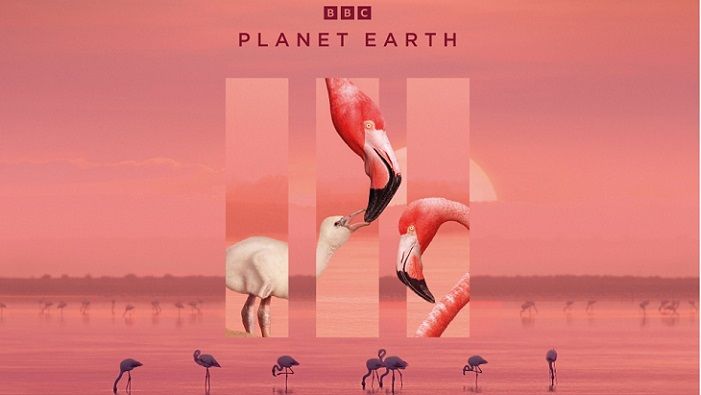
Episode One – Coasts
Air Date: Saturday, November 4 at 8 pm ET/PT on BBC America and Available on AMC+
Narrated by: David Attenborough
Produced and Directed by: Nick Easton
Film Editor: Rupert Troskie
Assistant Producers: Georgina Ward, Estelle Cheuk, Claire Arthur
Junior Production Managers: Sophie Bracey, Caterina Bruce-Clare
Series Junior Production Managers: Emily Fellowes
Photography: Roger Munns, Barrie Britton, Lianne and Will Steenkamp, Alexander Semenov, Kevin Zaquali, Santiago Cabral, Daniel Hunter, Edward Saltau, Barry Skinstad, Boris Von Schoenebeck, Dan Beecham, James Loudon, Rager Horrock, Sam Lewis, Simon De Glanville, Chris Bryan, Steve Wall – Crosswave, Robin Cox
Run Time: 58 min, 28 sec
Rating: 4 out of 5 stars
Website: www.bbcamerica.com
Comments: Gorgeous scenery greets the viewer here.
In Tasmania the waves are big and they do look amazing crashing into the coast.
South Africa is filled with seals. The close-ups let you see them so up close and personal it is like they are almost sitting in your lap. You can watch as Great White hunts the seals. It is not done how you think it would be. It does end in a surprise.
In the Arctic, a Sea Angel is shown it is a colorful delight to see. A Sea Butterfly wow a snail with wings that lives underwater. These are amazing creatures. There are also fish shooting insects out of trees.
Namibia has desert lions on the hunt. The nighttime filming does set up some beautiful videos of the animals in action. Catching prey in the dark is exciting.
The whales are large animals and they appear as majestic beasts. You will see so many things here that otherwise you would never know they even exist. You will witness the miracle of life too.
Canada’s West Coast has miles and miles of forests plus some beautiful waterways.
Have you ever wanted to be right in a snake’s face well here you can be. You will also see fish shooting insects out of trees. The fish get vicious in collecting their prize.
Mexico the flamingoes are out. There are a lot of them.
Rain Island has Green Turtles and with around 20,000 of them, there are lots to be seen. These turtles face many dangers. You will feel sorry for these majestic animals and the hardships they face.
Coasts are needed for life to go on for some species.
David Attenborough does a wonderful job as narrator. He delivers a smooth-flowing narrative that keeps you interested at all times and he adds so much to the visuals you see.

Episode Two – Oceans
Air Date: Saturday, November 11 at 8 pm ET/PT on BBC America and Available on AMC+
Narrated by: David Attenborough
Produced and Directed by: Will Ridgeon
Film Editor: Nick Carline
Assistant Producer: Tom Greenhalgh
Researchers: Georgina Ward, Elliot Jones
Junior Production Managers: Georgina Collingwood, Natasha Prymak
Series Junior Production Manager: Emily Fellowes
Photography: Santiago Cabral, Rafa Herrero Massieu, Hector Skevington-Postles, Hugh Miller, Kirsten Jakobsen, Florian Schulz, Sam Lewis, Kyle McBurnie, Johnny Rogers, Jeff Hester
Run Time: 57 min, 53 sec
Rating: 4 out of 5 stars
Website: www.bbcamerica.com
Comments: The opening scenes are breathtaking, the seas of the tropics are full of colors. The life below is unlike anything you see above. Some creatures are so weird-looking. The Frog Fish is one of them and it has its fishing rod.
Off the coast of North America t, the underwater planet makes you want to dive in and the filming here makes it so you feel like you can as it brings you right up close and personal. A Giant Sea Bass is an underwater monster. This thing does look mean. Other monsters lurk below too.
Flying Fish do look like they can fly short distances. Their fins look like wings once they leave the water. They move so gracefully. The Blue Shark are sleek streamlined creatures and they have a sinister look to them.
The Sea of Cortez Mobula Rays are shown jumping out of the water. It is almost like you are there watching them in person. Orcas will hunt Rays. They herd them like cattle well almost.
Deep down there are many creatures that glow in the darkness. Translucent makes them visible. Two miles down on the ocean floor animals do live. The Pearl Octopus is purple and you could watch the movie for hours. These Octopus make for caring mothers.
South American Sea Lions adapt to men being in their environment. Is this good or bad? Well from the way things end up for some Sea Lions at least it is very bad.
Accidents cause the deaths of millions of animals in the oceans. Humans need to do better.
David Attenborough’s narration is a pleasure to listen to, he has a way of speaking that makes you stop and just listen.

Episode Three – Deserts and Grasslands
Air Date: Saturday, November 18 at 8 pm ET/PT on BBC America and Available on AMC+
Narrated by: David Attenborough
Produced and Directed by: Kiri Cashell
Film Editor: Angela Maddick
Assistant Producer: Tom Greenhalgh
Researcher: Miraca Walker
Junior Production Managers: Natasha Prymak, Chloe Baylis
Series Junior Production Manager: Emily Fellowes
Photography: Mark Macewen, Toby Strong, Ian Llewellyn, Barrie Britton, Rolf Steinmann, Luke Nelson, Sam Lewis, Jack Hynes, Tom Rowland, Warren Smart
Run Time: 57 min, 42 sec
Rating: 4 out of 5 stars
Website: www.bbcamerica.com
Comments: Central Africa and the first animal we see is a herd of camels. Next, we see storage. The storages do show lots of care for their young ones. The nighttime filming of the storages is way too dark so you can barely see anything at all. A preditor is shown in the dark but all you can make out is a shadow. The desert is hard on the osstoragesnd not all the eggs survive and hatch.
Dunes acke sounds. In Arabia, the dunes are a sight to see and hear. The designs you can see here are visual delights.
In Australia’s desert, the male Spotted Bear Bird can look and sound furious as they compete for a female’s attention. Climate changes affect these birds and it is a sad thing to see.
A dust storm approaches and you can feel the fear in the air. These things are destructive. You would not want to be in the path of one of these.
Baboons do need water and here a mother is willing to fight for it for her and her child. Water is a life giver in a desert. Watching the rain fall in slow motion is an amazing sight as you know how precious it is.
A leopard hides in a tree waiting. She is a thing of beauty the cameras show her off splendidly. This leopard can jump and take chances doing it.
Saiga Antelope now this is a weird-looking creature. Their King has a harem.
In Brazil the grasslands we see the Maned Wolf which is a majestic beast. Its main threat is of course humans.
A herd of African elephants and so many other animals here. They look so beautiful in the wild in their natural habitat. The elephants are so majestic looking.
The researchers do care so much about the animals and with the Maned Wolves here that is very apparent.
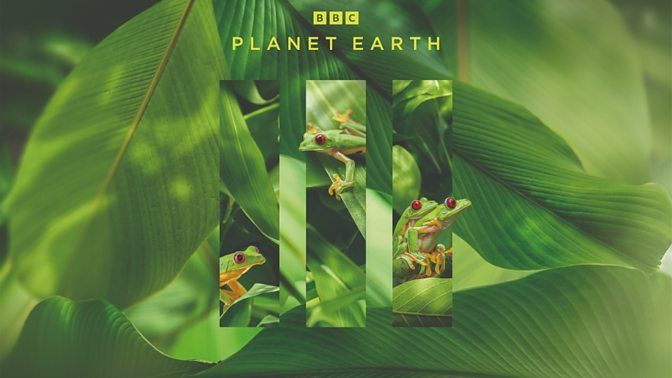
Episode Four – Freshwater
Air Date: Saturday, November 25 at 8p8 pmT/PT on BBC America and Available on AMC+
Narrated by: David Attenborough
Produced and Directed by: Charlotte Bostock, Nick Easton
Film Editor: Sam Rogers
Assistant Producer: Abi Brown
Researchers: Estelle Cheuk, Lewis Easdown, Liv Grant, Elliot Jones
Junior Production Manager: Rosie Shewell
Series Junior Production Manager: Emily Fellowes
Photography: Tom Walker, Abdullah Khan, Sam Lewis, Jack Hynes, Sophie Darlington, Pete Haynes
Run Time: 57 min, 50 sec
Rating: 4 out of 5 stars
Website: www.bbcamerica.com
Comments: The Yucatan Peninsula of Mexico is shown from underwater. This is a dark and beautiful place. The close-ups make it seem as if you are right there.
In the Rainforest of Costa Rica here Gliding Tree Frogs are cute creatures and very colorful. The males get out of hand ganging up on the females. Yes, it can be as much as ten on one.
South East Sri Lanka and it is the dry season. Even a watering hole can be filled with danger. When the crocodile springs forth it is an exciting moment.
Lily Trotters do walk on water. They are fun to watch. These birds are brave.
African Painted Dogs are lean in appearance. We get to watch them hunt their prey. They do hunt as a pack.
Lake Malua has some colorful fish and the blue ones pop out at you. One fish will lay dead to lure other fish in close.
The Western Coast of Equatorial Africa has a waterfall and the surrounding jungle is gorgeous, this is a paradise. There are so many Gobies here. It would be impossible to count them all. These fish struggle to live.
Men have created a large amount of dams and canals to control water. Men created this to provide water for millions of people. A stranded dolphin gives people the chance to step up and they do. This dolphin has only two thousand left of its species and it is great to see people step up to help it when needed. Rescuing these dolphins takes people working together who care about the species and its survival.
Freshwater is needed so our planet can survive.

Episode Five – Forests
Air Date: Saturday, December 2 at 8 pm ET/PT on BBC America and Available on AMC+
Narrated by: David Attenborough
Produced and Directed by: Sarah Whalley
Film Editor: Rupert Troskie
Director: Abigail Lees
Assistant Producer: Alex Walters
Junior Researcher: Amy Cavender
Junior Production Manager: Gemma Templar
Series Junior Production Manager: Emily Fellowes
Photography: Sam Lewis, Ronan Donovan, Howard Bourne, Will Foster-Grundy, Chris Tan Hanafi, Prakash Matada, Shaikat Chakraborty, Jacky Poon, Sam Ellis, Fabio Nascimento, Pete Cayless, Joris Van Alphen
Run Time: 57 min, 0 sec
Rating: 4 out of 5 stars
Website: www.bbcamerica.com
Comments: The film starts with beautiful scenic shots of the forest and some of the animals in it. David Attenborough has a soft smooth voice that is clear as he narrates this film.
Oriental Pied Hornbills are unusual birds. The females depend on the males a lot during mating season. The male works hard and the female well she creates life. These birds are like a loving couple.
A Tree Hopper does look strange. There are hundreds of species each looking different. They are like people working with bees and trading one thing for another.
Wild Dogs and dholes are amazing as they whistle to each other using a language only they can understand.
The up-close filming makes it seem as if you are right there almost able to reach out and touch the animals.
In Southern China, we see Temminck’s Tragopan have a colorful head you should see. Part of its mating procedure is similar to Puffing up and showing off.
Western Canada has Pacific Salmon being hunted by a Spirit Bear. A Spirit Bear is white iWatching her fish is a peek into her life.
The greatest enemy of forests is man. Man needs to think before man destroys.
Uganda East Africa has some cute chimpanzees which are amazing to see in their natural habitat. You will be drawn into this wonderful life the chimpanzees live. Humans could learn so much from animals.
These documentaries bring you right into the lives of these animals. You will understand as well how human incursion is affecting them and why they are diminishing.
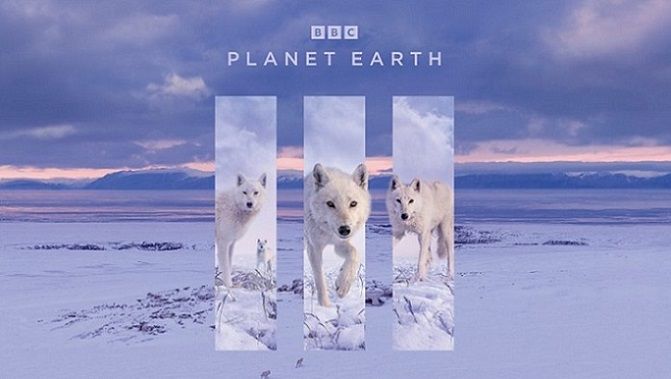
Episode Six – Extremes
Air Date: Saturday, December 9 at 8 pm ET/PT on BBC America and Available on AMC+
Narrated by: David Attenborough
Produced and Directed by: Theo Webb
Film Editor: Tim Lasseter
Researcher: Amelia Kyprianou
Assistant Producers: Claire Arthur, Georgina Ward, Alex Walters
Junior Production Manager: Sophie Bracey
Series Junior Production Manager: Emily Fellowes
Photography: Luke Nelson, Kevin Flay, Justin Maguire, John Shier, Barrie Britton, Daniel Hunter, Edward Saltau, Pete Cayless, Justine Evans, Jake Davis, Oliver Mueller, Ronan Donovan, Alain Lusignan, Ryan DeBoodt, Cyril Ruoso, Pascal Lorent, Stuart Trowell, Rolf Steinmann, Braydon Moloney
Run Time: 57 min, 47 sec
Rating: 4 out of 5 stars
Website: www.bbcamerica.com
Comments: In Viet Nam, we see the world’s largest cave. As we move through it the sights you will see will amaze and astonish you. Translucent cavefish and shrimp live here. As you explore this through the beautiful filming of this nature series you will be stunned by the beauty of it all.
At the North Pole, a pack of Arctic Wolves survive the cold. These wolves must work to survive and food is hard to find. As the wolves and musk interact it is just a part of life.
In the French Alpes, the Common Frog is seen peeking out of the ice and snow. This is cute.
In North Africa, monkeys look cute and cuddly as they search for food.
These documentaries do take you all over the world and you can enjoy them while sitting comfortably at home.
On the Coast of Mexico, there are so many butterflies. They look like the leaves on the trees. As they wake and take flight it is a beautiful sight and here you get to see it up close and personal.
South Africa the raging fire here is a fiercesome sight that is not welcome. As fire destroys nature pushes back as life is created a new. Some plants depend on fires.
Northern Australia has the Golden-Shouldered Parrot a very colorful bird and we see a fire there as well. Fire destroys yet also helps rebuild.
Humans do interfere too much in the living of animals.
Elephants are having a hard time surviving in East Africa. Poor baby elephant life is hard and survival harder. Seeing a herd of elephants is a sight you will not forget and here the filming makes it seem as if you are right there.
A Snow Leopard in the Gobi Desert is shown with her cubs. The cubs are playful. They live in extreme territories.
Animals do adapt and survive in any extreme.

Episode Seven – Human
Air Date: Saturday, December 16 at 8 pm ET/PT on BBC America and Available on AMC+
Narrated by: David Attenborough
Produced and Directed by: Fredi Devas
Film Editor: Dave Pearce
Researcher: Amelia Kyprianou
Assistant Producers: Charlotte Bostock, Abigail Lees, Natalie Coles
Researchers: Niall Stopford, Miraca Walker
Junior Production Manager: Gemma Templar
Series Junior Production Manager: Emily Fellowes
Photography: Neil Anderson, Mark Macewen, John Brown, Luke Nelson, John Heskew, Bertie Gregory, John Aitchison, Robin Cox, Tom Osborn, Warun Alagar Surendran, Jake Willers, Tim Sheperd, Tavish Campbell, Hayes Bazley, Rolf Steinmann, Fabio Nascimento, Justin Maguire, Zach Levi-Rodgers, Rob Hawthorne
Run Time: 57 min, 15 sec
Rating: 4 out of 5 stars
Website: www.bbcamerica.com
Comments: A rhino walks down a city street, this is a fun and amazing scene yet also a sad one as rhinos and other animals should not have to travel through a busy city just to survive.
David Attenborough delivers the most wonderful dialogue with his voice so you will be listening to every word he says and the tone of voice he says them with.
In Bali, the Long Tailed Macaques a tribe of them go to a temple and to see the tourists. The macaques do act intelligent and use a barter system with humans. These macaques play humans for everything they can get.
In New York City there are Pavement Ants. These little creatures feed mainly on junk food from humans. In New York City there are a lot more ants than people.
In India, a cobra slithers along. Snakes still kill thousands in India. This is amazing as you see up close these snakes living among humans.
In Melbourne, Australia a Frogmouth Chick looks extremely cute. They survive by blending in with their surroundings. The grey coloring on them is so beautiful.
In Lake Tahoe, Pennsylvania the Black Bear finds lots of food. The bears do like to search for easy food and go places they should not be.
Off the Coast of Vancouver Island Hump Back Whales swim and they help the planet and benefit humanity. The way they help is natural yet kind of disgusting.
In Africa, a Bull Elephant comes too close to where people are living. Here the people chase it away and do not try to harm it. Elephants are majestic creatures.
North Eastern Africa has Desert Locusts and billions of them. They are a plague on the land. They can travel a lot and Man is responsible for the increase in them.
There are so many domesticated animals raised for feeding humans, chickens, pigs, and cows. Feeding them all takes a lot.
The Amazon Rain Forest is where sloths live. They are threatened by humans destroying their land.
Mankind needs to better manage how they use the land to feed us. Using high tech to better control how it is done. Changing things for the better.
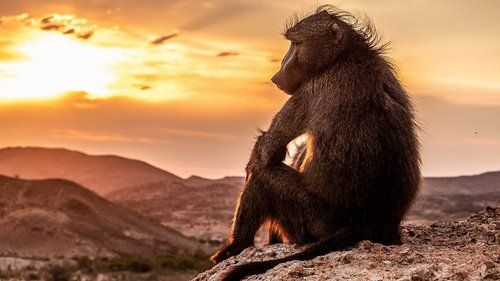
Episode Eight – Heroes
Air Date: Saturday, December 23 at 8 pm ET/PT on BBC America and Available on AMC+
Narrated by: David Attenborough
Produced and Directed by: Steve Greenwood
Film Editor: Alex Boyle
Researcher: Amelia Kyprianou
Assistant Producers: Estelle Cheuk, Abi Brown
Researchers: Niall Stopford, Miraca Walker
Junior Production Managers: Georgina Collingwood, Rosie Shewell
Series Junior Production Manager: Emily Fellowes
Director of Photography: Stuart Dunn
Photography: Vianet Djenguet, Neil Harvey, Fabio Nascimento, Craig Hastings, Howard Bourne, Ted Giffords, Neil Goodchild
Run Time: 57 min, 52 sec
Rating: 4 out of 5 stars
Website: www.bbcamerica.com
Comments: The people who fight to protect animals are heroes. They realize just how precious these creatures are. In the Andes is a research center. Here we see some beautiful close-ups of frogs one of the most endangered species in the world. One man along with others fights to keep frog species alive.
Elephants are becoming less and less in number. Stopping poachers puts people at risk. One woman here risks her life to catch those who deal illegally in selling elelephants’vory. This woman goes so far out of her way to help elephants. The poachers kill even baby elephants.
In Vienna t,wo woman looks after some chicks. This is a lot of work. They must be imprinted. Humans step in to replace the missing mothers. The amount of care these humans have is amazing to see and see what they do. The shots of the scenery here are stunning. You feel like you are right there.
The Amazon Rain Forest is disappearing so agriculture can take over the land. The indigenous people do make their views known, they want to save the rainforest.
In the oceans, coral is threatened too.
These people and many more have a passion for saving this planet and the animals and plants on it. They know saving these will save the planet and make it a better place for all who live on the planet Earth.
David Attenborough narrates in such a beautiful voice as he delivers the message here, protect our world so it is here for us and future generations.
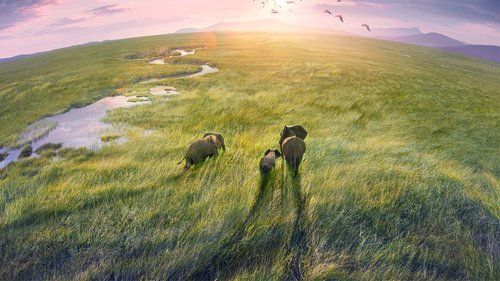
Episode Nine – Wonders
Air Date: Saturday, December 23 at 9:10 pm ET/PT on BBC America and Available on AMC+
Narrated by: David Attenborough
Edit Producer: Alex Walyers
Film Editor: Rory May
Additional Editing: Mark Good, Pawel Pracz
Production Team: Claire Arthur, Chloe Baylis, Charlotte Bostock, Sophie Bracey, Abi Brown, Kiri Cashell, Estelle Cheuk, Georgina Collingwood, Fredi Devas, Nick Easton, Emily Fellowes. Tom Greenhalgh, Abigail Lees, Natasha Prymak, Will Ridgeon, Rosie Shewell, Gemma Templar, Raquel Toniplo, Georgina Ward, Theo Webb, Sarah Whalley
Photography: Neil Anderson, Mitch Buckley, Santiago Cabral, Ryan Deboodt, Ronan Donovan, Edson Faria Junior, Neil Goodchild, Rob Hawthorne, Rafa Herrero Massieu, Daniel Hunter, Abdullah Khan, Sam Lewis, Mark Macewen, Braydon Moloney, Oliver Mueller, Fabio Nascimento, Luke Nelson, Edward Saltau, Hector Skevington-Postles, Rolf Steinmann, Abi Thomas
Run Time: 52 min, 04 sec
Rating: 4 out of 5 stars
Website: www.bbcamerica.com
Comments: It took five years to make Planet Earth III. The team traveled all over the world. They work with local experts. The close ups of the animals are stunning. The scenery is unlike anything you would normally see the photography brings you into this amazing world which is the one you live in, just parts you have not seen.
A cave becomes a place to explore and film as the viewer sees truly astonishing sights. The team does respect the land.
In the ocean sea creatures can get caught in nets. A turtle gets some much-needed help. You will feel sad for the creatures this happens to.
Lots of fishing for anchovies by big ships and nets and just this does deplete the oceans and endangers creatures.
Rain Island has so many Green Turtles. They are facing so many problems. Can the turtles survive?
Wolves are hard to find. Cubs without a mother will not survive. They look cute yet need help. Watching the animals wolves is a big part and as they watch they learn.
Dolphins are being helped and the film crew captures it all. Some people work hard to help the animals in need. The more people watch and study animals the more they know about them and how to help them.
One group of chimpanzees has learned to live among humans. In the jungle, it takes the chimps longer to grow used to the crew. Can chimps and humans live together? The cameras take you right up in their faces.
The wildlife team has done an excellent job of showcasing all these amazing animals and the problems they face from man. We see caring individuals helping out to save these animals so their species will live on.
